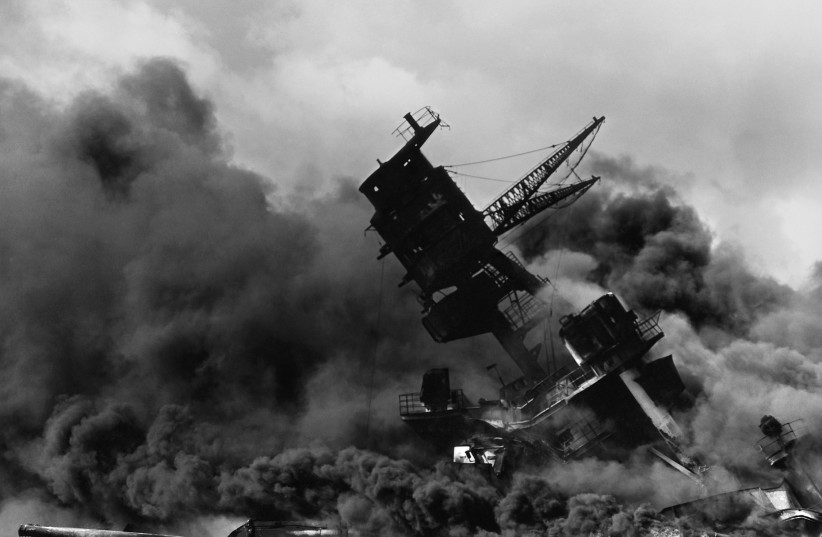December 7 marks 80 years since the Japanese attack on Pearl Harbor, an infamous surprise attack on the pivotal US naval base in Hawaii that ended up thrusting the US into World War II.
Though the US was officially a neutral nation in the ongoing conflict, there was still ongoing tensions as the US had halted shipments of gasoline, machinery and more to Japan due to the latter's aggressive actions in the Pacific.
It should be noted, however, that the roots to these tensions go back much farther, including to the end of World War I.
During the Paris Peace Conference in 1919 following the end of World War I, Japan had proposed the addition of the Racial Equality Proposal. While many nations supported it, it faced opposition from two primary sources: The United Kingdom (due mainly to Australia) and the United States, both of whom refused to support it. Even though according to the conference's rules it should have passed, as it passed with a clear majority, conference chair US president Woodrow Wilson said a special exception would be made for it and said the motion failed anyway.
The decision clouded Japan's ties with the West, especially with the US. But ties worsened even further after Imperial Japan's military expansion efforts throughout the 1930s and into World War II.

Negotiation efforts throughout the autumn of 1941 failed to achieve anything of note.
As tensions worsened, many in the US thought an attack was coming, though they thought the Philippines, rather than Pearl Harbor, would be the first target.
In Japan, some expressed caution about the attack, especially over the possibility of actually beating the US in a war. When Admiral Isoroku Yamamoto, head of the Japanese Navy, was asked by then-prime minister Fuminaro Konoe if Japan could beat the US in a war, Yamakoto famously said that he would "run wild considerably for the first six months or a year, but I have utterly no confidence for the second or third years."
Ultimately, the attack itself was carried out. At 7:48 a.m. Hawaiian time, over 350 Japanese airplanes struck the naval base, severely damaging or sinking all eight battleships present, along with several other ships. The attack saw 188 US planes destroyed, over 2,400 killed and over 1,700 wounded. By comparison, Japanese forces saw considerably fewer losses.
Japan had also sent a formal declaration of war that same day, but it was not delivered until the following day.
The next day, then US president Franklin Delano Roosevelt addressed a joint session of Congress on the attack, describing December 7 as "a date which will live in infamy," in what is considered one of the most famous and important presidential speeches in US history and was shortly followed by a US declaration of war against Japan.
The attack also saw the US thrust into the war on the side of the Allies, fighting against Japan and fellow Axis powers Germany and Italy.
Ultimately, this would see the Allies emerge victorious, beating back the Axis and, in Japan's case, see the dropping of two nuclear bombs on Japanese cities - the only times to this day that nuclear weapons have been deployed in warfare.
The ramifications and legacy of the attack are widespread and can be seen in numerous aspects. In terms of tactics, the Japanese attack failed to damage US aircraft carriers and submarines. And it was with these very vessels that the US was able to push the Japanese Navy back throughout the Pacific. Further, Japan failed to target several naval repair yards and other facilities, which the US was able to make use of.
But one of the most notable immediate ramifications of the attack was the American public quickly rallying together against Japan, though it also led to widespread anti-Japanese sentiments in the US and the placing of over 100,000 Japanese-Americans in internment camps.
It had also taken many Americans by surprise as while many were aware of a danger posed by Japan in the military, most others were overly focused on the threats in Europe, according to historians.
But also influential was Roosevelt's speech the following day. The phrasing of a "Day of Infamy" has gone on to be used in other political speeches, many comparing it to the speeches given by president George W. Bush following the 9/11 terrorist attacks.
The phrasing was also directly referred to in 2021 by Senate Majority Leader Chuck Schumer, when referring to the Capitol insurrection on January 6 that saw supporters of then-president Donald Trump storm the US Capitol to try to stop Congress from certifying the election in favor of Joe Biden. According to the Associated Press, Schumer referred to the day as a day that will "live forever in infamy."
On Tuesday, the US will mark the 80th anniversary of the attack, with survivors having begun arriving in Hawaii late last week, according to local news outlets.
Reuters contributed to this report.
